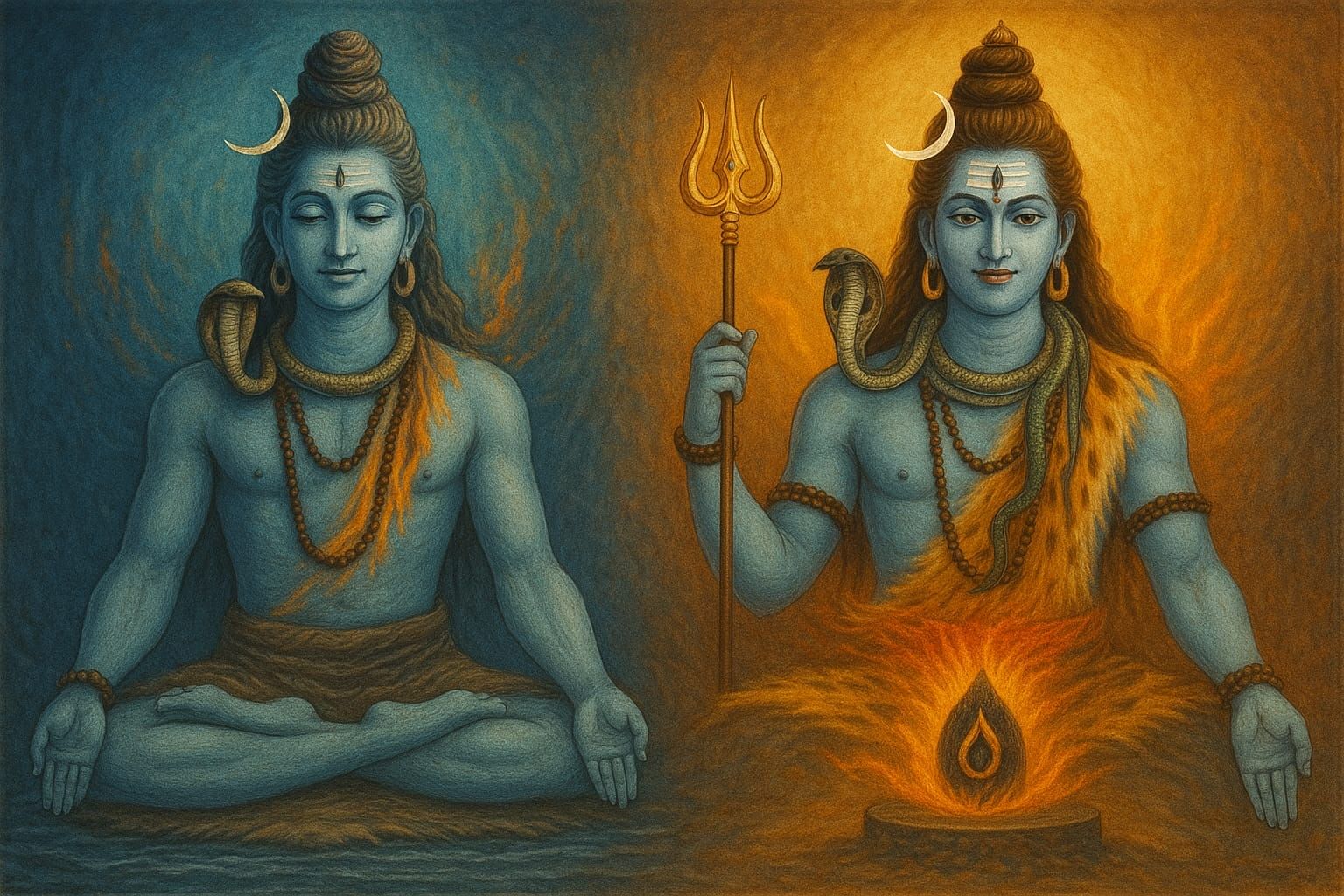What is the difference between Shiva and Shankar?
In Hinduism, Shiva has been called Adidev. Which were even before the beginning of the universe and will remain even after the Holocaust. He is a terrible Rudra at the same time, while on the other hand, Bholenath is easy, simple and immediately pleased with the devotees, but often the question arises in the minds of the devotees whether both Shiva and Shankar are the same or have any difference between them?
This mystery is explained in detail in ancient Shaiva texts like Shiva Purana, Linga Purana, and God Gita. Let us know what is the difference between Shiva and Shankar and what is the legend behind it that reveals this distinction.
Shiva and Shankar are not two, but the same. One is the one who is received in meditation formless. And the other are those who meet in Aarti, Abhishek and Stotras i.e. Bhaktavatsal, Saikar and Kripalu. Both these beliefs are considered in Sanatan.
Shiva- who are not born, never disappear
Shiva means welfare, but in the scriptures, his meaning is much deeper than this. It is clearly written in the Vidyeshwar Samhita of Shiva Purana.
“Nityam Shuddha Nirbhasam Nirgunam Nirvikalpakam.
As a result
This verse suggests that Shiva is a routine, nirgun, formless and latent Brahman. They are not bound in any form, neither are they born, nor do they end. They are consciousness which prevails in everyone, and beyond everyone. Yogis experience such Shiva in meditation, not in the idol. They have no shape, no form, they are an interview elements, which can only be felt with knowledge and care.
Shankar- who do the welfare of devotees
Now let’s talk about Shankar, whose idols we see in temples. Trishuldhari, Ganges in Jatas, snow in the neck and Bhasma. Shankar is a real form of Shiva. It is said in the scriptures that “Shan Karoti Iti Shankar:”, means that who does Shan (welfare), is Shankar. Shankar is the form that is virtuous, which we can see, worship, and with whom we can communicate. This is the same form who is a householder, Parvati’s husband, Ganesh and Karthikeya’s father, and reside on Kailash. This is the same Shankar who listens to the call of devotees, is happy with the fasts, and gives a boon immediately.
Both signs are also found in Shiva hymns
In Shiva Tandava Stotra, Ravana has described both the form of Shiva and Nirguna.
“Jatatvi Galjal Flow Pavithala
Throat
There is a discussion of the real form of Shiva, which are Nagadhari, Jatajutdhari and Gangadhar. But this hymn later points towards Shiva’s superpower and consciousness. This shows that devotees have always seen Shiva in two forms, one through devotion, another through knowledge.
Mythology related to it
This story is associated with the sense of Shiva and Vishnu’s form of Shiva. This is a famous story to explain the formless and real nature of Shiva. Lingodbhav Katha, which is found in both Shiva Purana and Linga Purana. According to the story, there was a dispute about superiority between Brahma and Vishnu. Brahma said, I am a creator, so I am superior. Vishnu said, I am a follower, who is older than me? Then an infinite fire-pillar appeared in the sky, which was neither visible, nor any end. Then there was the All India Radio that “who will reach the end of this fire, he will be called the best” Vishnu went downwards, Brahma upwards. Even after thousands of years of discovery, he did not get any end of the penis. Vishnu accepted the truth and bowed his head at the feet of Shiva, but Brahma lied that he had found the end of the penis and he witnessed the Ketki flower for this. At that moment Shiva appeared with fire and appeared as Shankar. He cursed Brahma when you would never worship, and gave a boon to Vishnu. This story deeply explains that formless fire is the original Shiva, and when he appears, then it is called Shankar, who are real and revered for the devotees.
Disclaimer: The information given in this news is based on religious beliefs. TV 9 India does not confirm this.
